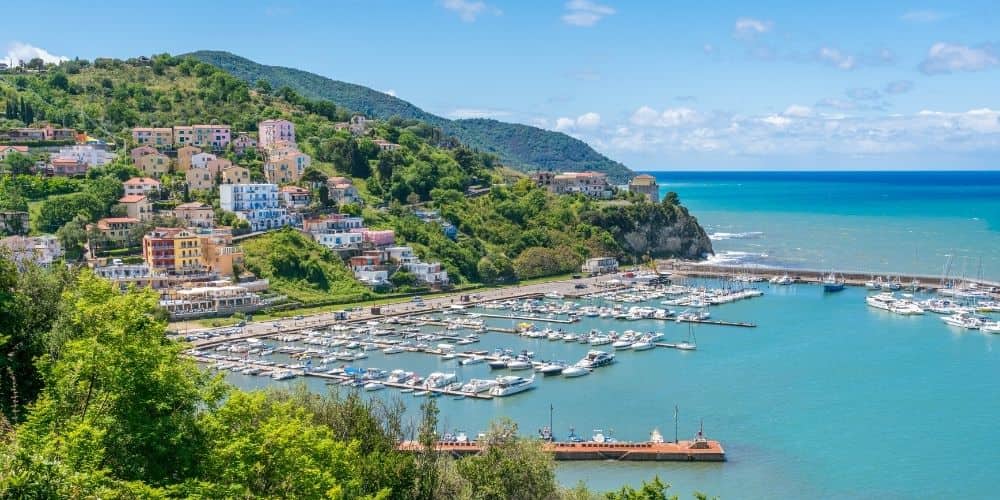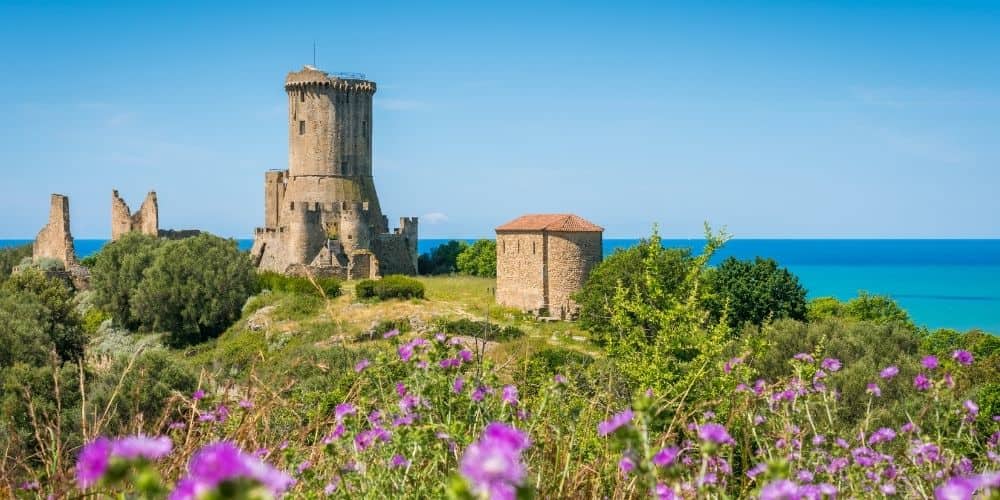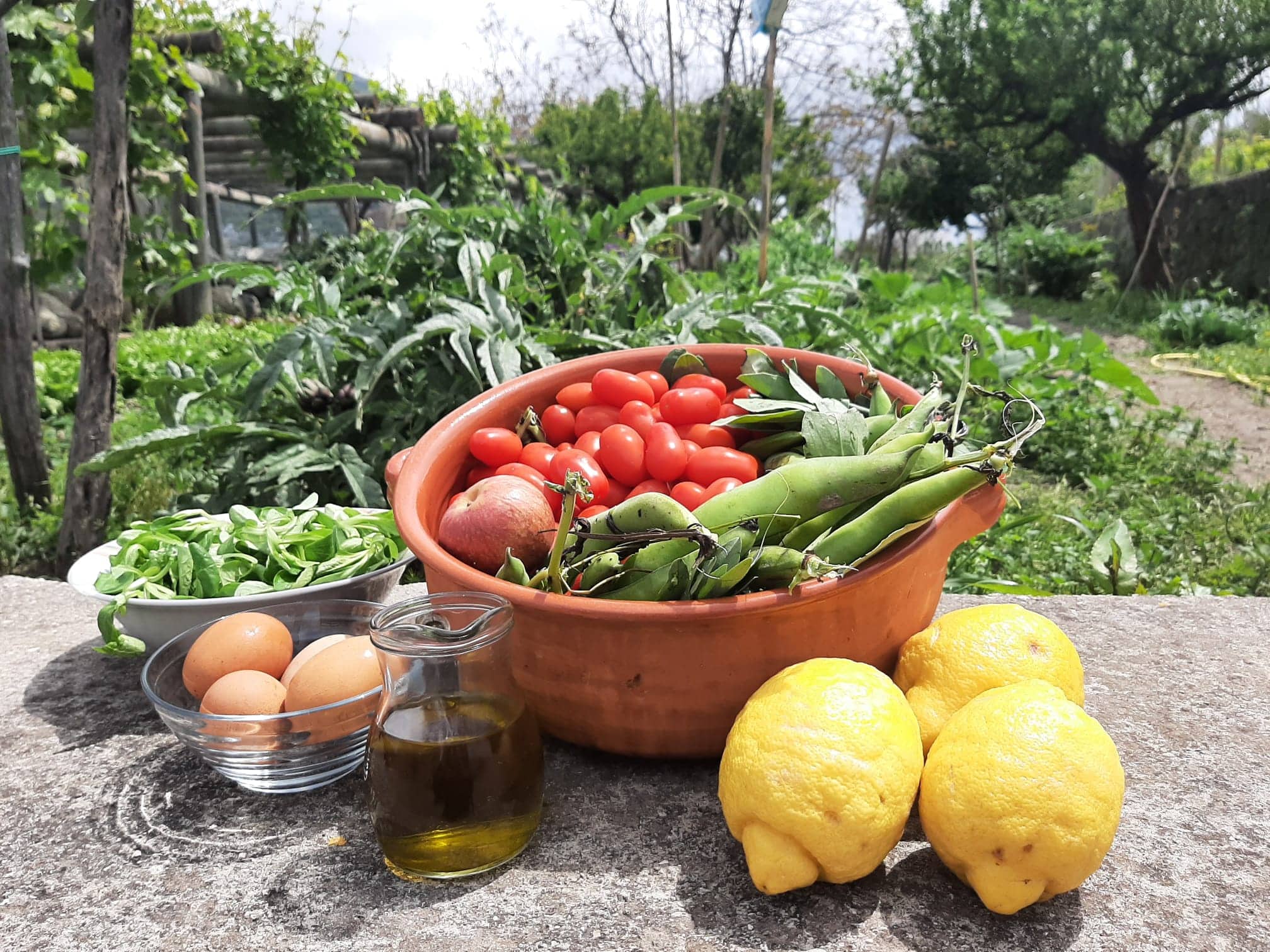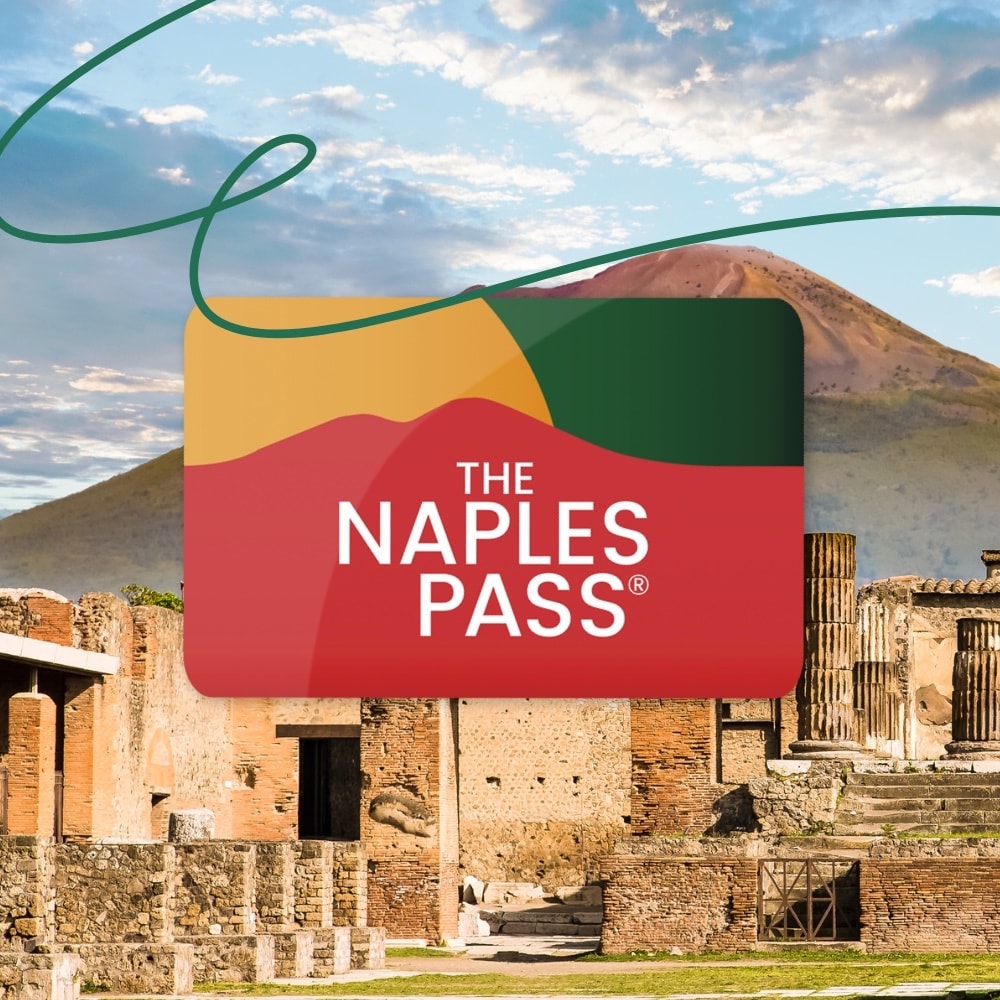They do not enter into your affairs; they rarely speak to you, but not because they are shy or lacking in eloquence, but because they are absent in their own thoughts. Anyway, it is enough for you to express a wish, and there they go to pieces to satisfy you: they do this out of an inclination to be liked, and it seems to me that this is a very rare civilization. Hospitable land, land of asylum!
Cilento, a jewel set between sea and mountains

Cilento, one of the most beautiful areas of Campania, lies in its entirety in the province of Salerno and offers places of great scenic, historical and cultural interest that should not be missed. The name Cilento derives from the Latin term "Cis Alentum", meaning on the other side of the Alento, a river that flows entirely through Campania region. It comprises no less than 80 municipalities and 8 mountain communities, divided into 5 sub-regions that are very different from each other and quite peculiar in their characteristics.
Multiform and multifaceted by its very nature, Cilento offers all its splendour in the form of sea, beaches, mountains, natural parks, archaeological sites, caves... and it is precisely this contrast that makes this land, so deeply rooted in nature and the environment, so rich in biodiversity and typical products.
There are numerous records, titles, and awards for beaches, typical products, and, last but not least, for the wonders recognized and included in the list of UNESCO World Heritage Sites. Starting with the beaches and the vast expanses of sand, Cilento has nothing to envy from the rest of Italy, and this year several of them have been awarded the blue flag.
Ascea: Piana di Velia, Torre del Telegrafo, Marina di AsceaCapaccio: Licinella, Varolato/La Laura/Casina D'Amato, Torre di Paestum/Foce Acqua dei RanciCamerota: Cala Finocchiara (or Spiaggia del Troncone), San DomenicoCasal Velino: Dominella/Torre, Lungomare/IsolaCastellabate: Lago Tresino, Marina Piccola, Pozzillo/San Marco, Punta Inferno, Baia OgliastroCentola: Palinuro (Porto/Dune e Saline), MarinellaMontecorice: Baia Arena, Spiaggia Capitello, Spiaggia Agnone, San NicolaPisciotta: Ficaiola/Torraca/Gabella, Pietracciaio/Fosso della Marina/Marina AcquabiancaPollica: Acciaroli and PioppiSan Mauro Cilento: MezzatorreSapri: San Giorgio, CammarelleVibonati: Santa Maria Le Piane, Torre Villammare, OlivetoCilento: between Culture and UNESCO Heritage

Let's not forget the celebrities and important personalities who have lived, stayed, or simply VIPs who have stopped here with their yachts on holiday. An exceptional tourist was the Italian poet Giuseppe Ungaretti during his trip in 1932, which took him, among other places in Campania, to Paestum, Agropoli, Pioppi, Velia and Pisciotta, the memory of which he entrusted to his pen in his work Il Deserto e dopo, more exactly in the third part of the collection entitled Mezzogiorno. The presumed and much-debated traces of Acciaroli (a spectacular seaside resort in the municipality of Pollica), which the American writer Ernest Hemingway seems to have immortalized in his famous 1952 work The Old Man and the Sea, remain immemorial. In all likelihood, and according to numerous testimonies traveling between myth, reality, and legend, the ten days spent by the writer in this small but enchanting place in the province of Salerno, between August and September 1951, inspired and influenced Hemingway in one of his best-known works, mentioned above.
So, this sub-region of Campania is not only synonymous with nature, sea, beaches... but also with culture and an authentic "cradle" of culture, in an enveloping atmosphere of a land that remains forever in the hearts and memories of those who have had the opportunity to walk on it.
Cilento and its 14 Slow Food Products

The Slow Food products are established by the Slow Food Foundation for Biodiversity Onlus, founded by Slow Food International and Slow Food Italy. This non-profit organization is joined by small food producers with the aim of enhancing and promoting healthy, genuine food and local products, as well as local ecosystems in clear opposition to fast food. They protect those small quality productions made according to ancient traditional practices. Among the characteristics evaluated by the commission, fundamental to be Slow Food products, the following are essential:
the real or potential risk of extinctiona proven and deep connection with the territory production by small companies of limited quantities of productremarkable organoleptic qualitiesenvironmental and social valueCilento's products are currently 14 and combine both the flavors of the sea and the land, produced with commitment, love, and passion and in full respect of nature and the environment.
In alphabetical order, among them we find:
The Menaica Anchovies, typical of Marina di Pisciotta and Pollica, are the first Slow Food product in Campania. The name Menaica comes from the type of fishing that respects the environment. Freshly caught or seasoned in salt, they are a real treat.
The White Artichoke of Pertosa is typical of the hilly town of Vallo di Diano -also famous for the Caves of Pertosa- and in the surrounding areas including the towns of Auletta, Caggiano Pertosa, and Salvitelle.
Among the products most closely linked to Cilento, we find Goat Cacioricotta cheese. It is the product of the pasture of an autochthonous species, called Cilentana goat or Cilento goat, and it is made through two different processing techniques, that of cacio (cheese) and that of ricotta cheese, hence the name. The cheese, in its fresh, semi-seasoned, or seasoned version, is produced in the whole territory of Cilento.
Cicerale Chickpea is a legume coming from western Asia, however, it has had good luck in the municipality of Cicerale. These are organic chickpeas, cultivated without the use of additives or chemicals and, above all, without any kind of irrigation.
Casalbuono Beans, whose ancient origins date back to the fourteenth century AD, represent another typical product and a delicacy of Cilento. In the area of cultivation, precisely Casalbuono, there are seven varieties of beans.
Controne Beans, cultivated in the municipality of Controne, come from very fertile soils rich in carbonates and grow thanks to the numerous aquifers on the massif of the Alburni mountains.
The Fagiolo della Regina di Gorga, another kind of beans with their properties and unmistakable sweet taste. It is a very ancient variety of white climbing bean cultivated in Gorga, a hamlet of the municipality of Stio. In chronological order, it is the latest arrival among the Slow Food products of Cilento.
The Fico monnato of Prignano Cilento is another product that has its origins in the ancient peasant tradition. The term "monnato", which is peeled, derives from the fact that the Fico Bianco del Cilento (White Fig of Cilento) is peeled and dried. It is produced in Prignano Cilento, Ogliastro, Agropoli and Torchiara.
The Fusillo di Felitto is a type of pasta, a sort of hollow cylinder of pasta that can be tasted during the famous Fusillo Festival which takes place in the town of Felitto in the second decade of August. Made with eggs, flour, salt, water, olive oil, it differs from the traditional fusillo from Cilento both for the type of processing and for the length of the pasta (about 20 cm).
The Maracuoccio di Lentiscosa or Maracuoccjo, produced in Lentiscosa in the municipality of Camerota, is a small legume similar to a pea characterized by its squared shape and by a bitterish aftertaste. Used to cook the traditional local dish called maracucciata, it is a legume having an ancient tradition too.
The Mozzarella in Mortella is a fresh cheese originating from mount Gelbison and Novi Velia. Actually, it is not a real mozzarella but a fresh caciocavallo cheese, wrapped in myrtle leaves, mortella in Cilento dialect. A plant used since ancient times, it preserves freshness and gives the cheese special and unmistakable aromatic notes. Produced throughout the Cilento area.
The Olive ammaccate del Cilento are known as a Slow Food product with the name of Oliva salella ammaccata del Cilento. They are "ammaccate, that is bruised, crushed one by one with a sea stone, pitted and immersed in water. After passed into a brine solution, they are used for preserved products in oil. They are produced all over Cilento.
The Salsiccia e soppressata del Vallo di Diano (sausage and soppressata, a typical kind of dry salami), produced for hundreds of years, is famous for its deliciousness and the excellent quality of the meat used to make this sausage. It is produced in the whole Vallo di Diano.
The Soppressata di Gioi is the only salami from Campania to be "lardellato" (larded), that is, with a strip of lard inside. This "strand" of lard is as long as the whole soppressata: indescribable goodness. Produced in Gioi, Cardile, Salento, Stio, Gorga, Orria and Piano Vetrale.
Cilento and the Mediterranean Diet

A dietary style studied by the US doctor Ancel Keys, who spent over 40 years in this land, the Mediterranean diet is actually a heritage particularly dear to Cilento. It was the mayor of Pollica, Angelo Vassallo, who was one of the main architects behind the inclusion of the Mediterranean diet in the UNESCO intangible heritage in 2010. In the heart of Pollica, considered the world capital of the Mediterranean diet, stands the Mediterranean Diet Study Centre, dedicated to the memory of Angelo Vassallo. He was able to transform the culture of his territory into wealth, starting from the landscape and arriving at the food, wealth not only for its inhabitants but for the whole world. The basis of this recognition was the quality and authenticity of the food and simple products such as fruit, vegetables, cereals, and olive oil, an elixir of long life for the population of this Cilento municipality on which Keys' studies focused. 40 years of research traced longevity and the low incidence of cardiovascular disease to the local diet, a diet that has been handed down from generation to generation with passion, commitment, and deep respect for the environment and its cycles, as well as for biodiversity and the land itself. In Pioppi, a hamlet in the municipality of Pollica, it is also possible to visit the Ecomuseum of the Mediterranean Diet, dedicated to the Ancel Keys, his discoveries on food, and the link with the Cilento population. So, Cilento is an undisputed master of quality, excellence, authenticity, and sustainability every day on the table and in the local activities that offer delights for our palate.
Perbacco, Tavern and Wine Bar

From the will and intuition of two brothers, Vito and Eugenio Puglia, the Enoteca-Osteria Perbacco of Pisciotta was born with the aim of promoting typical local dishes and Cilento products and, above all, to protect them from the consumption models in place since the end of the 1980s. In the spectacular location of a thousand-year-old olive grove overlooking the Mediterranean sea, they created a new concept of hospitality based on a strong passion for wine and food, a real reference point for those who love quality wine and food. Perbacco's philosophy is built on respect for nature and the environment, i.e. sustainability, on love for tradition and for their territory. Their guiding motif is, in fact, the concept of "Good, Clean and Fair".
The food and wine proposals are based on typical specialties and "0 km" products, some of which are self-produced, or from the surrounding area, the importance of which is always emphasized. Perbacco is the custodian of the fundamental task of handing down and respecting the local culture and cuisine characterized by simplicity enhanced only by the excellent raw materials used and the skill of expert hands. Here, the dishes are called "recipes of happiness" and change according to the cycles of nature and the seasons. A wide range of dishes ranging from courgette flowers stuffed with buffalo ricotta cheese and menaica anchovies, raw marinated bluefish, the classic and succulent aubergine parmigiana, flag fish rolls with herbs and smoked provola cheese, fusilli with meat sauce dusted with cacioricotta cheese, stuffed squid, anchovies in a pie tin. All is rigorously prepared using only the finest ingredients and with local products, both fish and meat from black pigs and steers bred in the surrounding areas. The variety of cheeses, whether fresh, semi-cured, or cured, is remarkable, as is the delicious soppressata to accompany with excellent wines. The true flavors of the Cilento are brought to the table thanks to Perbacco's daily commitment who keep alive the agri-food heritage of a wildland capable of offering priceless treasures.
Further Info about Enoteca-Osteria PerbaccoContrada Marina Campagna, 5, 84066 Pisciotta SA
About the author
Written on 30/06/2021



.jpg)
Alessandra Festa
Cilento, land of flavors, fragrances, culture and treasures which are listed in the UNESCO heritage. Typical products and excellence, authenticity and Slow Food products. A real journey to discover a territory suspended between sea and mountains, tradition and history.